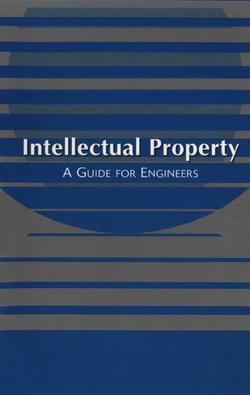Читать книгу Intellectual Property: A Guide for Engineers - American Bar Association - Страница 6
На сайте Литреса книга снята с продажи.
INTRODUCTION
ОглавлениеIn 1776, the philosopher/economist Adam Smith taught us that the wealth of any nation rested on three pillars: Labor, Capital and Natural Resources.1 Our generation has added a fourth pillar — Intellectual Property in all of its forms. Patents protect new technology. Copyrights protect literary and artistic works, as well as computer software. Trademarks assure orderly commercial development and consumer protection. Trade Secrets provide competitive advantage to creative companies. Intellectual property provides important incentives in the burgeoning use of the Internet for e-commerce.2 It is also an indispensable part of effective knowledge management — so critical in today’s business and educational environment.
Because of their inherent role as creators and managers of new technology, engineers should have a basic understanding of the various forms of intellectual property and their underlying laws and governing principles. The purpose of this guide is to provide a summary of these forms of intellectual property and to point those seeking broader knowledge to the many sources of additional information, much of which is now on the Internet.
The United States patent system and copyright laws are as old as The Republic, having been established by the first U.S. Congress. Yet, each of these forms of intellectual property — together with the protection of trademarks and trade secrets — is directly and fundamentally involved in the accelerating pace of new developments in our new millennium both nationally and internationally. What should the scope of patent protection be for new software and business methods in e-commerce? Should transgenic plants and animals be protected by patents worldwide? Is patent protection for the human genome consistent with future advances in biotechnology? Can traditional trademark rights be accommodated in assigning Internet domain names? Can traditional copyright protection be enforced in an era of instantaneous and worldwide publication via the Internet? Will the new Federal Economic Espionage Act adequately protect privately owned trade secrets targeted by post-Cold War foreign espionage? Given U.S. leadership in the global economy, will the current national systems of intellectual property protection mature into effective multinational systems? Answers to these and similar questions are emerging in the recent developments outlined in this discussion. Engineers and business executives have a large stake in shaping the future policy and legal decisions, which — at the end of the day — must be tailored to serve them and their needs.
This discussion is focused under six headings: patents, copyrights, trademarks and service marks, trade secrets, intellectual property and the Internet, and international protection of intellectual property.
1 Adam Smith, The Wealth of Nations: An Inquiry Into the Nature and Causes (Modern Library 1994), 1776.
2 Because of its importance and currency, a separate section of this discussion on Intellectual Property and the Internet is provided.
